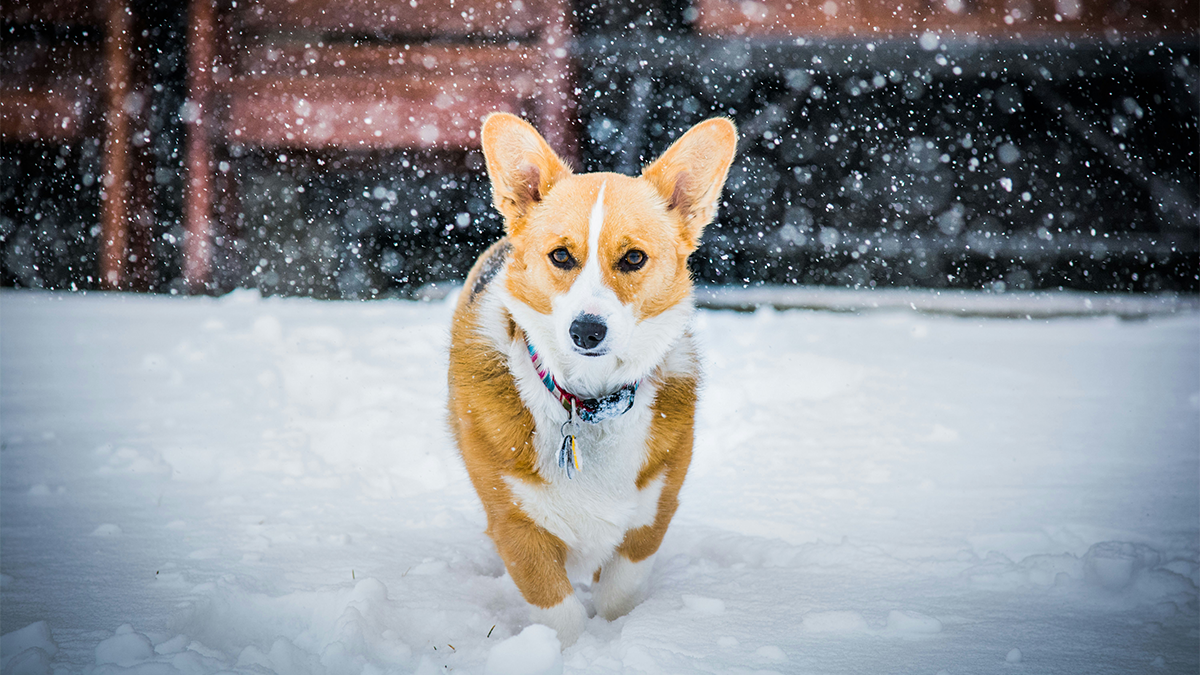As leaves fall and we get our yards ready for the coming of snow and ice, pet lovers should be aware of what they need to do in the coming months to help keep their pooches safe in cold weather. From windproof shelters to keeping an eye on how long your pet spends outdoors and in this winter, these are the things that you need to do to make sure that your pet enjoys the coming cold as much as you do.
These Are the 4 Things You Need to Do to Keep Your Dog Safe From Pittsburgh’s Winter This Year
Cover Up – One of the most important factors for pet spending time outside during Pittsburgh’s less hospitable months is access to proper shelter. Anyone who has experienced a winter in Pitt can attest to the wide variety of weather that the cold months can bring in, from freezing rain to feet of snow. Providing the proper shelter is paramount in keeping your beloved pet out of the worst parts of the icy wind. The shelter should be well sealed to keep out moisture, both for the comfort of your pet and for long term structural stability. Make sure that wind and rain aren’t getting in through any tiny cracks or holes, and seal with a strong, weather-proof sealant when you find gaps in your building materials. A warm bedding material is also helpful to get your pet up and off of the ground, which can quickly drain body heat if they lay directly on it. Make sure that the entrance is covered by a stiff material that will keep out the wind and rain while still being obviously accessible to your pooch. Familiarize your dog with the structure before the winter months come to ensure that they feel comfortable coming and going when they are outside to help them regulate their body temperature.
Chemical Safety – As you take care of your vehicles, driveway, and walkway this winter, be mindful of what winds up falling in places that are pet accessible. Antifreeze is often brightly colored and has a distinct odor that seems to draw in many dogs, but it can quickly cause a number of health issues including death when ingested, so make sure that you clean up any spills quickly if they are within reach of your dog or any passing pooches. Additionally, many of the chemicals commonly used to quickly melt ice can cause potentially lethal imbalances for pets. Even simple salt can cause issues if your dog gets to it, so be sure that you only use pet friendly ice melting solutions in places that your pooch has access to. It is also important to keep a particularly close eye on your pets if you are walking them near to a road that has recently been plowed since the salts and chemicals used can often spill onto nearby sidewalks.
Time It Out – As temperatures start falling and cold winds begin whipping through your yard, keeping an eye on how long your dog spends outside at any given time is increasingly important. Each dog has their own tolerance for the cold which can vary based on breed, age, hair length, and even personal preference. Keep a careful eye on your pooch if they are spending more than a few minutes outside to make sure that they don’t suffer from hypothermia. Weather conditions are just as important as the temperature on the thermometer as wet weather tends to cool pets off much more quickly than dry weather. For dogs that are smaller, older, or non-cold hardy breeds it is important to limit outdoor time, and provide them with a suitable covering when possible, or a sweater or blanket to help them maintain body heat. If your pooch is a particularly cold hardy breed then you may need to keep a careful eye on them indoors rather than out. As temperatures rise in your home it can be easy for long haired dogs especially to get overheated necessitating some time out in the cool snow.
Feeding Time – When winter months come proper access to foods is more important than ever for your pets, and all too often food supplies that are easily accessible in the Summer become problematic when cold weather comes. Outdoor food supplies can be covered over by even minor snowfall, and freezing rain can leave food inedible, so make sure to check that outdoor food supplies are covered from precipitation, especially when snow starts covering the ground. Additionally, if one of your pooch’s primary water supplies is outdoors, you’ll need to ensure that it is either in a place that gets heat from indoors, or in a heated bowl that will keep the water liquid. When you go to feed your pets, make sure that you add a little extra over the winter as they will need extra calories to help keep them warm.



